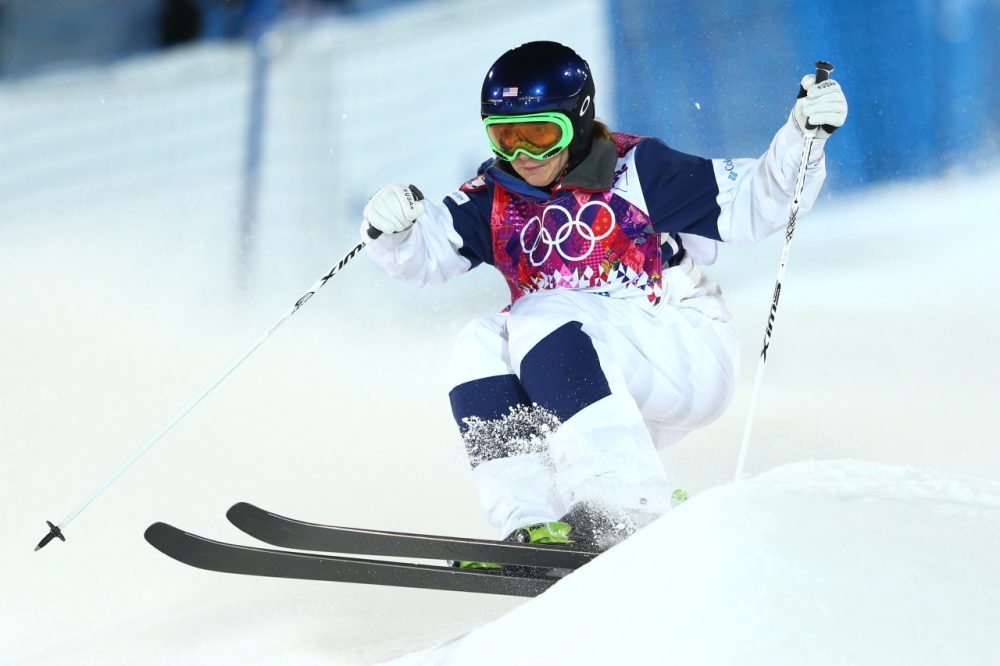Advertisement
Why Olympic Skiers And Snowboarders Are Training In The Ocean
Resume
A group of Olympian skiers and snowboarders have been spending time in Hawaii, and they're not on vacation. These athletes were training by learning to hold their breath and diving dozens of feet under water.
The Wall Street Journal's Matthew Futterman has covered the new training method and he joined Bill Littlefield to explain.
BL: Whose idea was it to train snowboarders and skiers by teaching them to spend more time under water than they thought they could?
[sidebar title="An Older Sports 'Trend'" width="330" align="right"]OAG's Doug Tribou traveled to Scotland for the Commonwealth Games and returned with a report on lawn bowls, a sport so old Shakespeare referenced it.[/sidebar]MF: I think the main credit for the idea goes to Andy Walshe, who's the head of high performance for Red Bull. I think most people probably know Red Bull as an energy drink maker. But Red Bull is also a big sponsor of sports. They're not just sponsoring these athletes, but they're training them, too, and they're pretty much willing to try just about anything.
BL: Tell me a little bit about what these athletes are hoping to accomplish with this training.
MF: I think a lot of them are mainly hoping to accomplish the ability to relax. And a lot of relaxation begins with the breath and the ability to control your breath, especially right before competition when you're nervous and you're getting the jitters. And they're also just trying to get themselves to be comfortable in what is a very uncomfortable situation.
BL: Were you surprised to learn that some of these top athletes — skiers and snowboarders — aren't calm and comfortable when they start down the hill?
MF: Somewhat surprised but the more time you spend with these people the more you realize they put their pants on one leg at a time and they get nervous, and a lot of them — they're kids.
BL: Free diver Kirk Krack, who's working with these athletes, says that in just one day he can teach people to hold their breath for four minutes. How does he do that?
MF: It starts with these very sort of slow warm-up breaths. You sort of enter a kind of meditative state. And really sort of using all of your capacity to bring in as much air as possible and then there's a certain technique that you do with your throat that — the analogy he used when he was describing it to me was sort of tying off the end of the balloon and then sort of trapping that air in there. And then also sort of understanding how to deal with the inevitable feeling that your body has to want to breathe. And to sort of rewire your brain and convince it to stay relaxed and that you will be OK.
BL: Deep diving has been criticized as dangerous — and it is dangerous. Are these athletes doing the same sorts of dives that have led to deaths in some cases?
MF: I guess the answer to that question is both yes and no. And you're right to say it's dangerous. If there's any segment that is done on your show that should have a sort of "Don't try this all on your own" warning before it, it would be this one. So if you are a free diver and you're going farther...than anyone's ever gone before, chances are nobody's with you. So I think that's one real danger that gets eliminated when these athletes are practicing. They always have a buddy, they know about safety and they can be rescued.
BL: Learning to stay calm under water is one thing, but is that really transferable to learning to stay calm at the top of a mountain?
[sidebar title="Meet 'Grandma Luge'" width="330" align="right"] She's a sexagenarian and she's trying to make it to the Rio Olympics in 2016. [/sidebar]MF: I don't know that you can ever be completely sure. But when you talk to these athletes, it's understanding the idea that being fearful doesn't help you deal with the fear in any way. I think that's where the transference is.
So much about these sports is confidence. The worst thing they can do is hesitate or hold back. That's the most dangerous thing they can do, because it's when you hesitate and hold back that you don't complete it and you get thrown off.
BL: Do you see this method of training catching on or are we looking at a fad here?
MF: I see the idea of athletes doing everything they can to get some sort of psychological edge and get some sort of edge in terms of relaxation, I think that will catch on. And if this is a method that works, I don't see a reason why more people won't try and do it. The issue here is at this level there's so little difference in athletic ability. There's so little different in training method. There's no secrets anymore. Information is everywhere. There are great coaches in almost every country. So what it really comes down to is what can you do in that moment to make yourself most comfortable.
This segment aired on August 16, 2014.